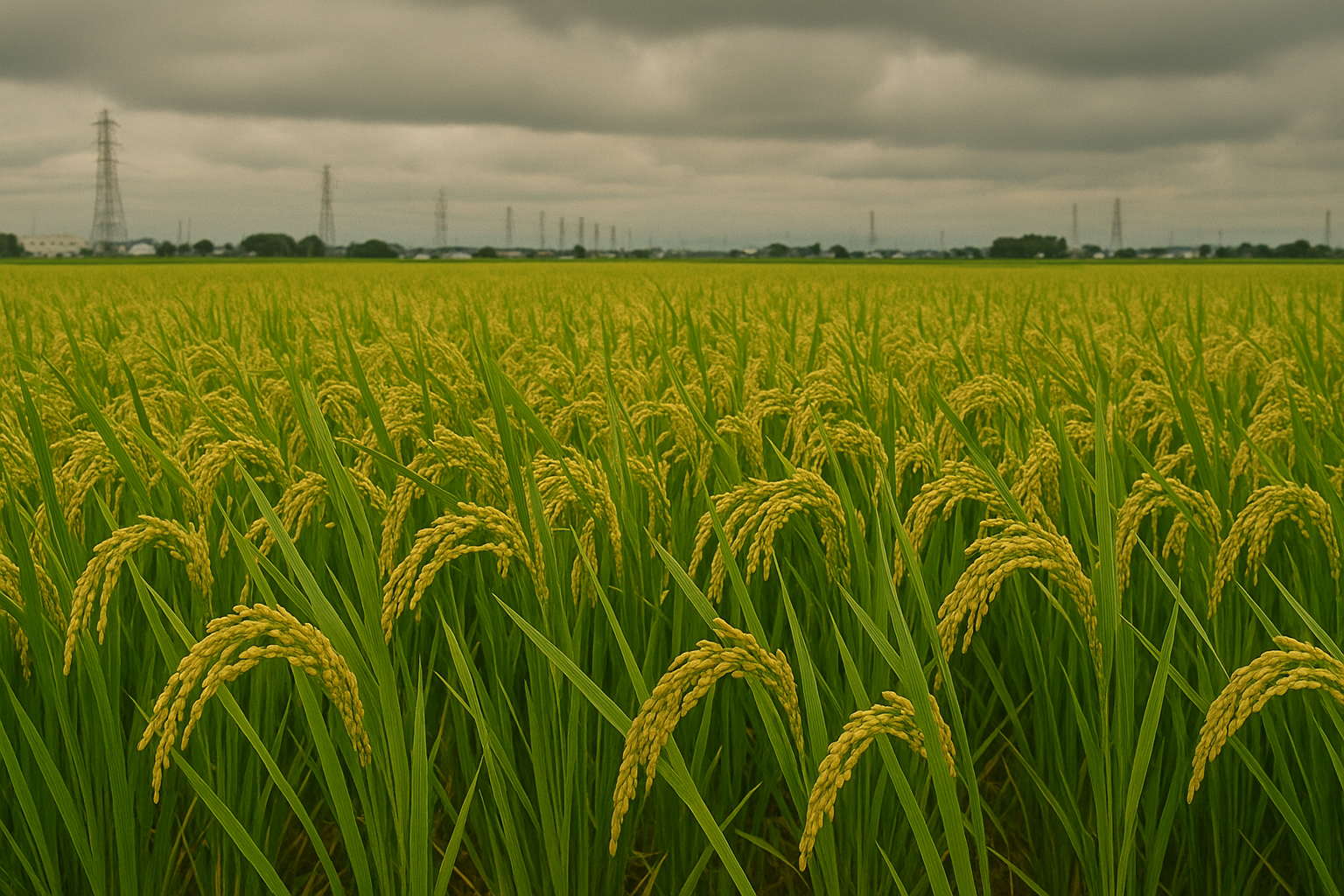Japan’s Rice Crisis: Understanding the Surge in Prices and Supply Shortages
In the heart of Japan’s culture and culinary tradition lies rice, a staple food that has shaped diets and social customs for generations. However, recent events have thrown the rice market into turmoil, leading to soaring prices and alarming shortages. The situation has become so dire that it has prompted significant political repercussions, including the resignation of Agriculture Minister Taku Eto. This article delves into the complexities of Japan’s rice crisis, examining the underlying causes, the impact on consumers and farmers, and potential solutions moving forward.
The Importance of Rice in Japanese Culture
Rice is not just food in Japan; it is a symbol of life, prosperity, and community. The Japonica strain of rice, known for its sticky texture and rich flavor, is deeply embedded in the culinary landscape of the nation. Traditionally, rice has been celebrated in various cultural practices, from festivals to religious ceremonies. Despite a gradual decline in overall rice consumption over the decades, it remains a vital component of the Japanese diet, reflecting its historic significance.
The Current Crisis: A Perfect Storm of Challenges
Since last summer, Japan has witnessed a dramatic rise in rice prices, with costs doubling in some instances. The crisis was exacerbated by a combination of factors:
- Panic Buying: A warning about a potential “megaquake” sent consumers rushing to supermarkets to stock up on rice, creating an artificial shortage.
- Increased Demand: Rising tourism and more frequent dining out have elevated the demand for rice. Additionally, as wheat prices surged due to the geopolitical climate, many consumers shifted back to rice as a staple.
- Poor Harvests: Adverse weather conditions, including extreme heat and pest infestations, led to a disappointing 2023 rice harvest.
These factors have combined to create a situation where rice stocks are critically low. According to the latest data from the Japanese Ministry of Agriculture, rice stocks have plummeted to 1.53 million tons, a record low, leaving the nation in a precarious position.
Government Response and Political Fallout
In an effort to mitigate the crisis, the Japanese government has released rice reserves, typically reserved for emergencies. However, the distribution has been sluggish, with only 10% of the released stocks making it to the market. This delay has led to mounting frustration among consumers who are left wondering, “Where’s the rice?”
The situation escalated when Agriculture Minister Taku Eto made a controversial remark stating that he “never had to buy rice” because supporters gifted it to him. This comment, perceived as out of touch with the struggles of everyday citizens, prompted his resignation as Prime Minister Shigeru Ishiba sought to regain public trust ahead of a crucial national election. The need for effective leadership in addressing the rice crisis has never been more urgent.
Understanding the Structural Problems
Japan’s rice supply chain is complex and rooted in tradition. The majority of rice farmers sell their products through the Japan Agricultural Cooperatives (JA), a powerful entity with strong ties to the ruling Liberal Democratic Party. This established system has its advantages, but it also makes it difficult to adapt to changing market conditions. Masayuki Kanamori, an executive at the National Federation of Agricultural Co-operative Associations, noted, “Looking back, the current rice shortage was unforeseeable. We are puzzled.”
Experts have pointed out that Japan’s agricultural policies, which often encourage farmers to reduce rice acreage in favor of other crops, are fundamentally flawed. Kazuhito Yamashita, a research director at the Canon Institute for Global Studies, criticized these policies, stating, “Acreage cutbacks are contrary to food security, a ruinous policy.” He argued that Japan should allow more rice cultivation and even consider exporting surplus rice to bolster food security.
Consumer Reactions and Retail Strategies
As prices continue to soar, consumers are feeling the financial strain. Many, like Hiromi Akaba from Kawasaki, have reluctantly accepted the rising costs, saying, “If this continues, we will stop eating rice. This could lead to a shift away from rice consumption.” To combat the crisis, some retailers have implemented purchasing limits, allowing customers to buy only one bag of rice per visit.
Retailers are also exploring alternative solutions, including imports. Major supermarket chain Aeon Co. is set to offer U.S. grown Japonica “Calrose” rice in over 600 outlets across major cities. This move aims to diversify offerings and provide consumers with more affordable options. Aeon plans to sell 9-pound bags of Calrose rice for around $20, promoting it as a versatile alternative suitable for various dishes, including fried rice.
The Path Forward: Long-term Solutions Needed
To address the immediate crisis and ensure long-term food security, it is essential for Japan to adopt a comprehensive strategy. This may include:
- Encouraging Rice Production: The government must reconsider its policies on rice acreage, potentially incentivizing farmers to produce more rice to meet domestic demand.
- Enhancing Supply Chain Efficiency: Streamlining distribution channels and improving transparency in the rice market could help better align supply with consumer demand.
- Investing in Agricultural Innovation: Integrating technology and modern farming practices can increase yield and sustainability in rice production, ensuring a resilient food supply.
- Educating Consumers: Promoting awareness around the importance of rice in Japanese cuisine and culture can help mitigate shifts away from rice consumption.
Conclusion
Japan’s rice crisis is a multifaceted issue that highlights the intricate relationship between agricultural policy, consumer behavior, and cultural values. As the government navigates this challenging landscape, it must prioritize strategies that not only address immediate supply shortages but also foster sustainable rice production for future generations. The journey ahead will require collaboration between policymakers, farmers, retailers, and consumers to ensure that rice remains a staple in Japanese life, reflecting its enduring significance in the nation’s identity.





